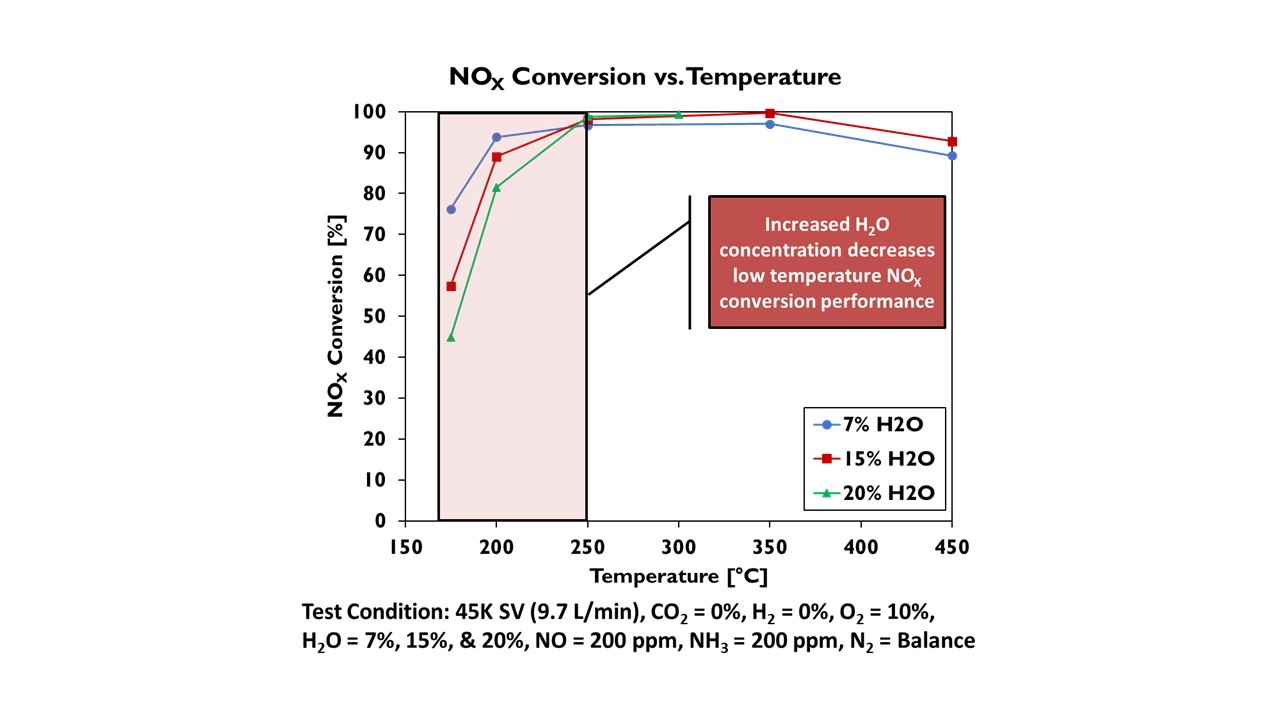Background
Hydrogen-fueled internal combustion engines (H2-ICE) have rapidly become a key element of the greenhouse gas (GHG) compliance portfolio of engine and vehicle manufacturers around the world. While H2-ICE is highly effective in addressing GHG emissions, any combustion system still generates oxides of nitrogen (NOx) which are local air pollutants related to human health concerns. Modern exhaust aftertreatment technology is highly effective at reducing these NOx emissions to extremely low levels, but the technology is tightly tied to the chemistry of fossil fuel combustion. To allow H2-ICE to be both a zero GHG and near-zero NOx emitter, R&D activity was necessary to develop the fundamental knowledge of how to implement aftertreatment technology for these engines.

Testing
This IR project focused on bench-scale evaluations of a wide range of aftertreatment technologies. These encompassed all the gas-phase aftertreatment stages that are required for an engine: oxidation catalysts to oxidize hydrogen, ammonia, hydrocarbons, and carbon monoxide (these last two can still be released from any engine lubricant that is consumed during combustion) and reducing catalysts to reduce NOx (urea selective catalytic reduction and hydrogen catalytic reduction). Both commercially available catalyst formulations and formulations identified in the literature (which were synthesized at SwRI) were evaluated for their performance in reducing NOx emissions in simulated H2-ICE exhaust on a universal synthetic gas reactor bench. These results were then used to conceptualize an optimized H2-ICE aftertreatment system design.

Accomplishments
All laboratory evaluations have been completed. These tests have shown that precious-metal catalysts can, in the presence of H2, generate significant amounts of dinitrogen oxide (N2O), which is a powerful greenhouse gas. They have also identified catalyst that are effective in reducing NOx emissions without this side effect and have led to the development of methods for aftertreatment system control to reduce emissions and manage thermal conditions on the catalysts.


